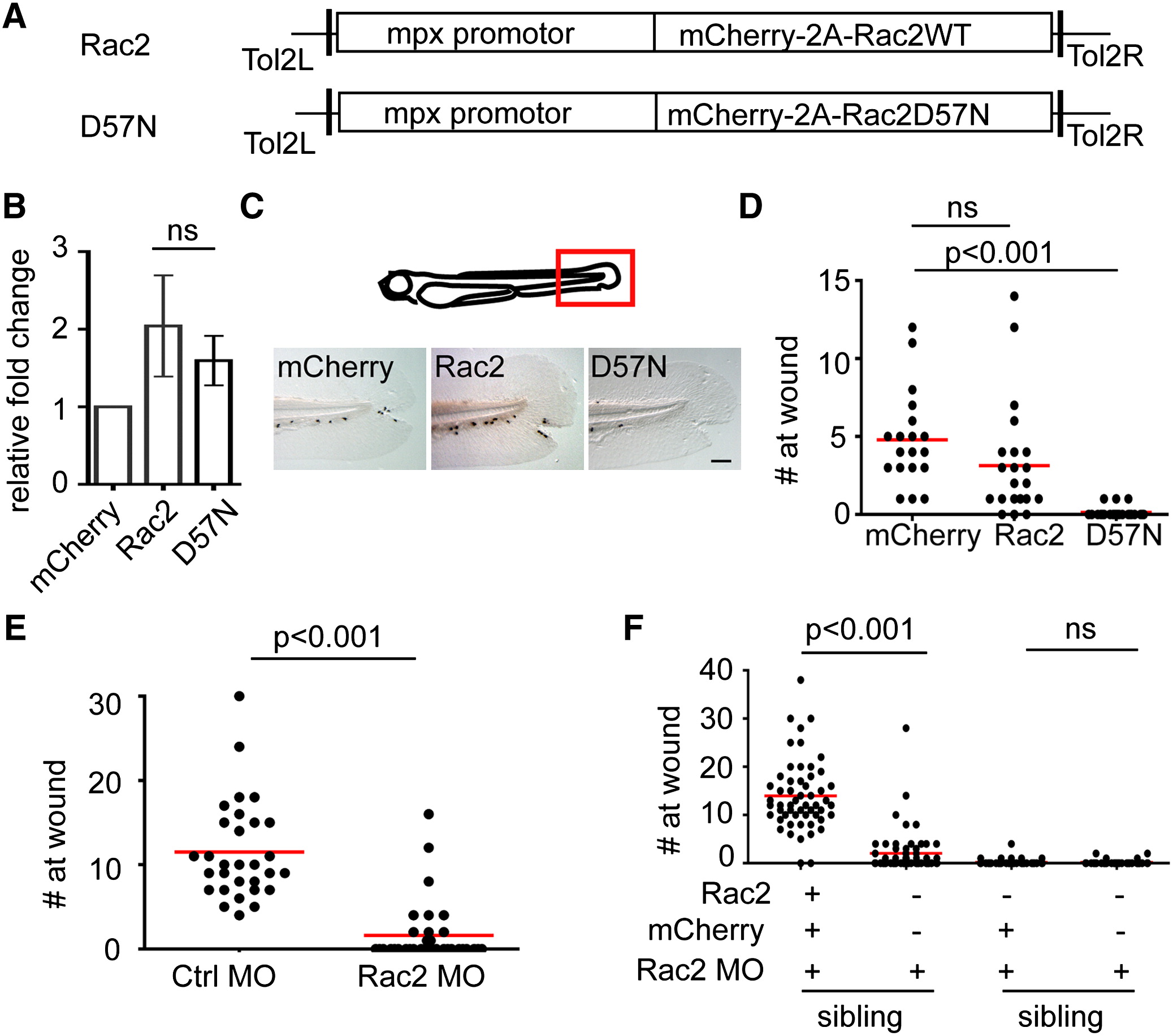Fig. 1
Neutrophil Intrinsic Rac2 Activity Is Required for Neutrophil Wound Response
(A) Schematics of Tol2-MPX:mCherry-2A-zRac2 vectors, both wild-type and D57N, injected into wild-type AB zebrafish to generate Tg(mpx:mCherry-2A-Rac2) (Rac2) and Tg(mpx:mCherry-2A-Rac2D57N) (D57N) transgenic lines.
(B) Relative expression level of Rac2 mRNA in neutrophils in Rac2 and D57N lines compared with Tg(mpx:mCherry)(mcherry) determined by quantitative RT-PCR. Result is presented as mean ± SD (n = 3). Ns, nonsignificant, two-tailed paired t test.
(C) Sudan black staining of neutrophils at tail wounds at 1 hr post wounding (hpw) in 3 dpf mCherry, Rac2, or D57N larvae. Scale bar represents 50 μm.
(D) Quantification of neutrophil wound response shown in (C). n = 35 (mCherry), 37 (Rac1), and 42 (D57N). p < 0.001, Kruskal-Wallis test followed by Dunn′s multiple comparison test.
(E) Morpholino oligonucleotides (MO)-mediated knockdown of Rac2 reduced neutrophil recruitment to tail wound at 2hpw. n = 30 (ctrl MO) and 37 (Rac2 MO). p < 0.001, two-tailed Mann-Whitney U test.
(F) Expression of MO-resistant mCherry-2A-zRac2WT, but not mCherry alone, in neutrophils rescues defect in wound recruitment in Rac2 morphants. Columns 1-2 and 3-4 are siblings, which are used as an internal control for MO efficacy. n = 55, 60, 54, and 40 for columns 1<4. p < 0.001, Kruskal-Wallis test followed by Dunn′s multiple comparison test.
See also Figure S1 and Movie S1.
Reprinted from Developmental Cell, 21(4), Deng, Q., Yoo, S.K., Cavnar, P.J., Green, J.M., and Huttenlocher, A., Dual roles for Rac2 in neutrophil motility and active retention in zebrafish hematopoietic tissue, 735-745, Copyright (2011) with permission from Elsevier. Full text @ Dev. Cell

